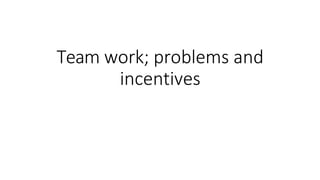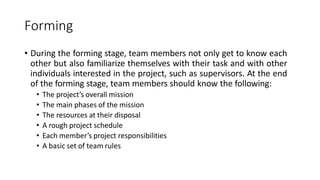This document provides an overview of teams and teamwork. It defines what a team is, describes different types of teams, and discusses the benefits and challenges of teamwork. The document also covers team development stages, factors that influence team effectiveness, and ways to manage conflicts within teams. Key points include: teams have common goals, different types include functional, cross-functional, and self-directed teams, benefits are synergy and increased productivity, disadvantages can be groupthink and intergroup conflicts, and effective teams have clear roles and utilize resources.


















































